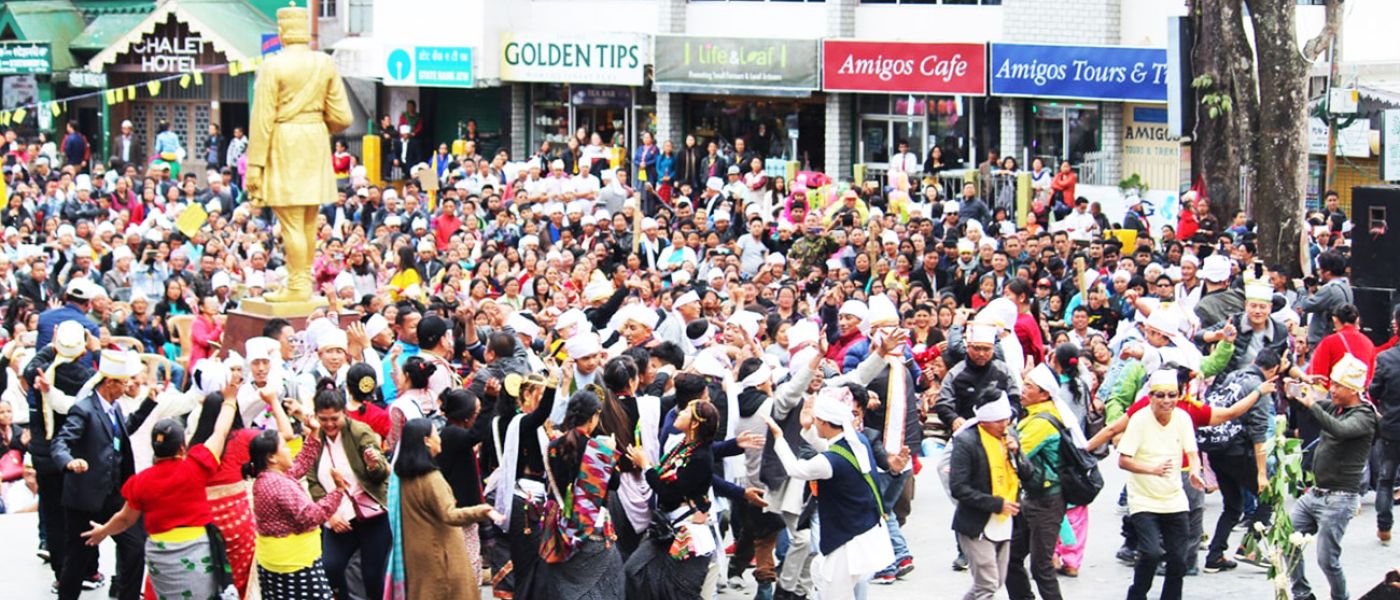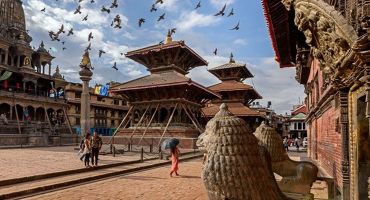Writing history from a Khambu perspective requires reconsideration of the consensual popular narrative. Khambus have always attached cultural and economic practices to the land in and around Kalimpong and Darjeeling. Yet in the popular narrative, the one indoctrinated by the colonists, we’ve been taught to embrace the tea-garden immigrant view. This narrative persists, not for a scarcity of information but rather for an absence of motivation to study and ask questions.
In the winter of 1871-72 CE, a regular census was taken in the district of Darjeeling. Although the deputy commissioner regretted incorrect reports in and around the Damsang Tract (Kalimpong), the census was considered to be fairly accurate. The number of Kiratis including Dewan, Khambu, and Limbu was 13,692 which constituted about 42 percent of the total Nepali population in the district. The Kiratis formed the largest group of the Nepali population followed by Tamang (6570) and Mangars (3011). By statistics alone, it can be said that by the middle of the 19th century, before the tea industry started, Kirati Khambus already seemed to have settled in Darjeeling.
Before 1774 CE, before the eastern conquest of the Gorkha King Prithivi Narayan Shah, Kiratis had divided the land east of the Kathmandu valley into Wallo (Near) Kirat, Majh (Middle), and Pallo ( Far) Kirat. Pallo Kirat extended from the Arun river in the west to the Singalila range up to the regions along the Sikkim border. This region was later consolidated by the Gorkha soldiers under Prithivi Narayan Shah who stretched his border up to the Tista river.

After the Anglo- Nepal war, Nepal signed the treaty of Sugauli on the 4th of March, 1816. Nepal ceded most of the lands it possessed to the British East India Company. The territory lying between the Mechi and Tista rivers (which currently forms Darjeeling, Kurseong, and Siliguri subdivisions ) were given to Sikkim after the treaty of Titaliya between the East India Company and Sikkim on February 10th, 1817 because Darjeeling was always a disputed land between the Kiratas, Gorkhas, Sikkim and the British, the indigenous population included the hill tribes of the Lepchas, Limbus and the Khambus along with a fair amount of Murmis, now Tamangs. This is evidenced by the fact that in a chronicle of Sikkim rulers in the Limbu language, Fung rai is mentioned as the Hang (King) of Panchthar from which a little further up is the Choyabanjyang pass joining around the Darjeeling hills where no resistance was offered to the Gorkhali commander Abhimansingth Basnet when the Kirat country fell in 1774 CE, thereby suggesting that Isilimba and Choyabanjyang always belonged to the kingdom of Fung Rai.
F.B. Hamilton observes that the Gorkhali Commander Genti Khatree (Jayanti Khatri) had penetrated up to Chongtong (Chungtung) and the Gorkhalis were also stationed at Nagri and Sittong. The Gorkhalis received no resistance in these parts as Far Kirat had already defeated. By 1794 CE, the Gorkha forces had begun the policy of appeasement. Many of the Khambus had emigrated beyond the Tista River into Sikkim. A royal order was issued to Sambahang Nambang Rai and one Nabha Rai about pardoning them and asking them to return to confirm the ownership of their ancestral lands.

In the mid-sixteenth century, Vijayanaryan, a Hindu Koch king was in power in Vijaypur (now, Dharan, Nepal). Vijaynarayan entered into a truce with the Kiratis living in the hills north of Morang and took into service, Singha or Simha Rai as Chautariya or Prime Minister. He later had Simha Rai executed because he “being an impure beef-eating monster defiled a Hindu Woman”. The son of Simha Rai, Baju Rai (Bajihang, I.S Chemong) went to Lohang Sena, the King of Makwanpur for help. Lohang took the help of the Kirati Khambu army and crossed the Adhwara River and occupied Vijaypur. Hamilton accounts that Bajihang was killed by a Lepcha Chief in 1618 CE. Lohang is said to have avenged the death of Bajihang and later spread his empire up to Lohagarh which presently falls in the foothills of Kurseong. That Lohang’s conquest from the Adhiyariver to the Mahanada in the east with the help of the Khambu army suggests that the Kirati Khambu were around the Kurseong region as early as 1618 CE.
Up until 1878 CE, much of the vacant lands in the Mirik region had no tea plantations. Dr. Campbell had to face a labor scarcity problem. He requested a local Khambu Nobleman Shri Dakman Rai to assist him in bring immigrant workers from Nepal to work at the tea plantations. Dakman Rai helped set up tea plantations at Soureni in 1878, at Phuguri in 1880, and Sampripani in 1883 CE. Mr. Dakman Rai’s name is always mentioned whenever the history of tea in Darjeeling is mentioned. Much of the lands in Darjeeling already had Kirati Khambu people even before tea was planted by the British. The Kirati Khambu Rai people have been a part of Darjeeling’s geography and history-shaping it for more than 3 centuries. The East India Company had given three Grants from 1840-1870 a)The Rungpo Grant to Bahadur Rai b) the Mirik Grant to D. Lloyd and c) The Phuguri Grant to Dakman Rai.

Another instance can be seen in the year 1828 CE when the East India Company sent G.W Lloyd and G.W Grant to Darjeeling which was an old Gorkha station. It is said that G.W Lloyd spent almost a week in February 1829CE in Darjeeling. They deemed Darjeeling perfect to be turned into a health resort for European soldiers. The Englishmen decided to visit Sikkim in 1831 CE because if the company possessed Darjeeling, it would confer ‘considerable political benefits as well as make an ideal health resort. The King of Sikkim agreed in giving Darjeeling to the company because we wanted the restoration of the original boundary of his kingdom claiming that the Yakha and the Khambu tribes were under him. It is interesting to note that Sikkim had never made any attacks against the Gorkhas and their kingdom. Sikkim also never claimed parts of Ilam to be part of their Kingdom. But Sikkim had always vehemently laid claim to Darjeeling and tried to protect it at all times. From these incidences, one can draw an inference that Darjeeling always had a significant amount of Yakha and Khambu tribes.





Leave a Reply